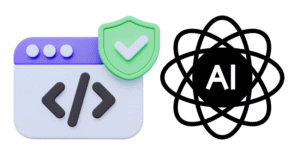In the early days of working with large language models (LLMs), the narrative was simple: craft a good prompt, and the model would do something cool. This was enough to power demos, tweet-worthy experiments, and maybe even an MVP. But as soon as you tried to build something real, a tool, a product, an autonomous agent, you hit a wall.
That wall? Context.
The most sophisticated LLMs today aren’t held back by their models. They’re bottlenecked by the information we give them, the framing, the memory, the facts, the constraints, the tools, the summaries, and even the vibes. And that’s where context engineering comes in.
Let’s unpack what this discipline is, why it’s becoming the cornerstone of serious AI development, and how to think about it as both an art and a systems problem.
What Is Context Engineering?
In the world of AI, particularly context engineering for LLMs, context refers to everything the model “sees” in its input window before generating an output. This includes:
Instructions (the system prompt)
Dialogue history (short-term memory)
Retrieved documents or facts (RAG)
Known user preferences or goals (long-term memory)
Tool descriptions and API schemas
Output formatting constraints
Procedural plans and task state
Context engineering in AI is the craft of assembling, filtering, formatting, and sequencing this information. It’s not about changing the model, it’s about changing the environment the model reasons in.
Think of it like setting up a workspace for a highly skilled assistant. If the papers are messy, instructions unclear, and key data buried in irrelevant fluff, the assistant will fail, not because they’re unskilled, but because the environment isn’t helping them think.
Why Context Engineering Matters More Than Ever
Two major trends have made AI context engineering go from a nice-to-have to the make-or-break skill in deploying LLMs:
1. Context Windows Are Growing Exponentially
Just a few years ago, we had 2,000-token limits. Now, with GPT-4 Turbo, Claude 3.5, and Gemini, we’re working with 100K, 200K, even 2 million tokens. That’s enough to fit whole books, databases, or product catalogs. But bigger windows don’t mean better results… unless we know what to do with them.
2. LLMs Are Becoming Agents
LLMs are no longer just answering trivia. They’re writing code, analyzing documents, planning trips, and booking appointments. These are multi-step workflows. The models need memory, tools, goals, and the ability to adapt across turns. That’s not prompt engineering anymore, that’s context engineering LLM ecosystems.
Core Patterns of Context Engineering
Here’s a high-level framework used in production systems:
1. Writing Context
Store key data outside the model, logs, scratchpads, notes, plans. Think of this as saving “thoughts” for future reference.
2. Selecting Context
Don’t just throw everything into the window. Use embeddings, similarity search, and task awareness to pull only what matters now. Relevance is king.
3. Compressing Context
Use summarization, trimming, and recursive condensation to pack more information into fewer tokens. Often, summaries beat raw logs.
4. Isolating Context
Break apart unrelated threads. Different agents or workflows should not share the same context soup. Compartmentalization reduces noise and distraction.
These four patterns form the heart of context engineering in AI systems today.
Common Pitfalls (And How to Avoid Them)
If you’re building with LLMs and seeing strange behavior, there’s a good chance the issue is in your context. Here are some classic failure modes:
Context Poisoning: Irrelevant or hallucinated data degrades the model’s reliability. Solution: Validate and filter inputs.
Context Distraction: Too much clutter makes the model lose focus. Solution: Rank and compress.
Context Clash: Contradictory instructions lead to unstable output. Solution: Isolate roles and threads.
Lost in the Middle: Models prioritize start and end tokens. Solution: Chunk or prioritize mid-sequence info.
Good context engineering systems proactively address these with metrics, tooling, and automation.
Context Engineering as a Competitive Advantage
Here’s a hot take: The real frontier in AI products is not which model you’re using, it’s how well you curate and orchestrate its context.
Here are examples of where great context engineering makes the difference:
Legal Tech: Retrieval-augmented models quoting case law with traceability.
Coding Assistants: Tools that fetch relevant functions and file diffs, not entire codebases.
Customer Support: Memory-driven bots that recall previous issues and offer continuity.
Healthcare: AI copilots that contextualize patient history, symptoms, and treatment protocols.
Each of these relies on high-quality, task-specific, dynamically assembled context, not a bigger model.
The Tech Stack: What’s Under the Hood
Modern AI context engineering relies on a few key pieces:
Vector Stores: For similarity-based retrieval (Pinecone, FAISS, Weaviate)
Memory Layers: Short-term vs long-term, with metadata and TTL policies
Context Managers: Systems that track state and stitch together prompts dynamically
Summarization Pipelines: Recursive or hierarchical, often backed by fine-tuned LLMs
Embeddings & Search: Dense retrieval, hybrid ranking, semantic chunking
Frameworks like LangGraph and Semantic Kernel are emerging to help with orchestration. But at its core, every product needs to design its own context strategy.
Self-Engineering Context
Right now, humans engineer context for LLMs. But eventually, we’ll build systems that engineer their own.
This is where things get exciting. Agents that:
Reflect on their own outputs
Summarize their own logs
Decide what to remember or forget
Anticipate what context they’ll need later
Coordinate context across sub-agents
When this happens, AI systems will start to exhibit the beginnings of true situational awareness. Not just answers, but understanding.
Context Is the New Code
If you’re building AI systems, here’s the core insight:
Models are constant. Context is your variable.
You can’t change what the model was trained on. But you can control what it sees. And that’s where the magic is.
The people and teams who master context engineering LLM systems will unlock levels of quality, coherence, and reliability others can’t match. It’s not about tricking the model. It’s about partnering with it, by setting the stage perfectly.
So stop trying to write the perfect prompt. Start building the perfect context.









